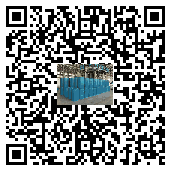A must-read for beginners! Key steps for the correct use of water-based metallic
pigment dispersants
The use of water-based metallic pigment dispersants must follow certain processes and key points,
and reasonable use can give full play to their role.
Preparation before use
Understand the characteristics of dispersants: Carefully read the product instructions of the dispersant,
and understand its chemical properties (such as acidity, alkalinity, solubility, etc.), scope of application
(which metal pigments and water-based systems are suitable), recommended dosage and other information.
For example, some dispersants may only be suitable for acidic water-based systems and have poor effects
on alkaline systems.
Check the metallic pigments and base materials: Confirm that the purity, particle size distribution and
other indicators of the metallic pigments meet the requirements to avoid affecting the dispersion effect due
to the quality of the pigments themselves. At the same time, check the quality of the water-based base material
(such as water-based resin solution) to ensure that it is free of impurities and deterioration.
Prepare equipment and tools: Prepare the equipment required for dispersion, such as high-speed dispersers,
sand mills, stirring kettles, etc., and ensure that the equipment is clean and free of residual impurities. In addition,
it is necessary to prepare measuring instruments, such as electronic balances, measuring cylinders, etc., to accurately
weigh and measure dispersants, metallic pigments and base materials.
Addition method
Pre-dispersion addition
Steps: First add part of the water-based base material to the dispersion container, turn on the stirring device, slowly
add the water-based metal pigment dispersant under low-speed stirring, and stir for a certain time (such as 5-10 minutes)
to allow the dispersant to fully dissolve and disperse in the base material. Then, slowly add the metal pigment while stirring,
and continue stirring for a period of time (such as 15-30 minutes) to allow the metal pigment and the dispersant to initially
contact and interact with each other.
Example: When preparing water-based aluminum paint, first add 30% of the water-based acrylic resin solution to the
stirring kettle, turn on the stirring, set the speed to 300-500 r/min, slowly add the recommended amount of dispersant,
stir for 8 minutes, and then slowly add aluminum powder, and stir for another 20 minutes.
Direct addition: For some situations where the dispersion requirements are not particularly high, or the dispersant has
good compatibility with the metal pigment and base material, the dispersant, metal pigment and water-based base material
can be added to the dispersion equipment together, and then stirred or ground to disperse. However, this method may have
a slightly worse dispersion effect than pre-dispersion addition, and it is necessary to appropriately extend the dispersion time
or increase the dispersion strength.
Dispersion process parameter control
Stirring speed: The stirring speed has an important influence on the dispersion effect of metallic pigments. Generally speaking,
in the initial addition stage, the stirring speed should not be too high to avoid generating a large number of bubbles and
excessive shear force causing deformation of the metallic pigment. As the dispersion proceeds, the stirring speed can be
gradually increased to enhance the dispersion effect. However, the stirring speed should not be too high, otherwise it may cause
the metallic pigment to break or the dispersion system to be unstable. For example, in the pre-dispersion stage, the stirring speed
can be controlled at 300-500 r/min; in the high-speed dispersion stage, the stirring speed can be increased to 1000-1500 r/min.
Dispersion time: The dispersion time should be determined based on factors such as the type of metallic pigment, particle size,
dispersing ability of the dispersant, and dispersion equipment. If the dispersion time is too short, the metallic pigment may not be
fully dispersed; if the dispersion time is too long, it will not only increase the production cost, but also may cause the metallic
pigment to be over-grinded and affect its performance. Usually, the optimal dispersion time can be determined by experiment.
For example, for aluminum powder with a larger particle size, the dispersion time may take 30-60 minutes; while for copper powder
with a smaller particle size, the dispersion time may be 20-40 minutes.
Temperature control: During the dispersion process, the temperature will also affect the dispersion effect. Generally speaking,
a proper temperature increase can improve the activity of the dispersant and the dispersibility of the metal pigment, but too high
a temperature may cause problems such as dispersant decomposition, metal pigment oxidation or deterioration of the
water-based base material. Therefore, it is necessary to control the temperature in the dispersion process within a suitable range.
For example, the dispersion temperature of most water-based metal pigment dispersion systems can be controlled at 20-40℃.
Dispersion effect detection and adjustment
Appearance observation:
Observe the appearance of the dispersion system by naked eyes to determine whether the metal pigment is evenly dispersed.
If the dispersion system presents a uniform and delicate appearance, without obvious particle agglomeration or precipitation,
it means that the dispersion effect is good; on the contrary, if the dispersion system has stratification, precipitation or surface
roughness, it means that the dispersion effect is not ideal and needs to be adjusted.
Particle size analysis: Use a particle size analyzer to detect the particle size of the dispersed metal pigment to understand the
particle size distribution of the metal pigment. If the particle size distribution is narrow and the average particle size meets the
requirements, it means that the dispersion effect is good; if the particle size distribution is wide, or there are a large number of
large particles, it is necessary to further optimize the dispersion process parameters or adjust the amount of dispersant.
Performance test: According to the use requirements of the product, the performance of the dispersed water-based metal
pigment system is tested, such as gloss, hiding power, weather resistance, etc. If the performance indicators do not meet the
requirements, it is necessary to analyze the reasons and make corresponding adjustments. For example, if the gloss is low,
it may be that the metal pigment is unevenly dispersed or the amount is insufficient. The dispersion time or the amount of
metal pigment can be appropriately increased.
Subsequent treatment
Filtration: After the dispersion is completed, in order to remove the small amount of impurities or large particles that may
not be dispersed well, the dispersion system needs to be filtered. Suitable filters or filter elements can be used for filtration
to ensure the quality of the product.
Storage: Store the filtered water-based metal pigment dispersion system in a sealed, dry, cool container, away from
direct sunlight and high temperature environment to prevent the dispersion system from deteriorating or precipitating.
At the same time, pay attention to the storage period and use it in time according to the requirements of the product
manual.


